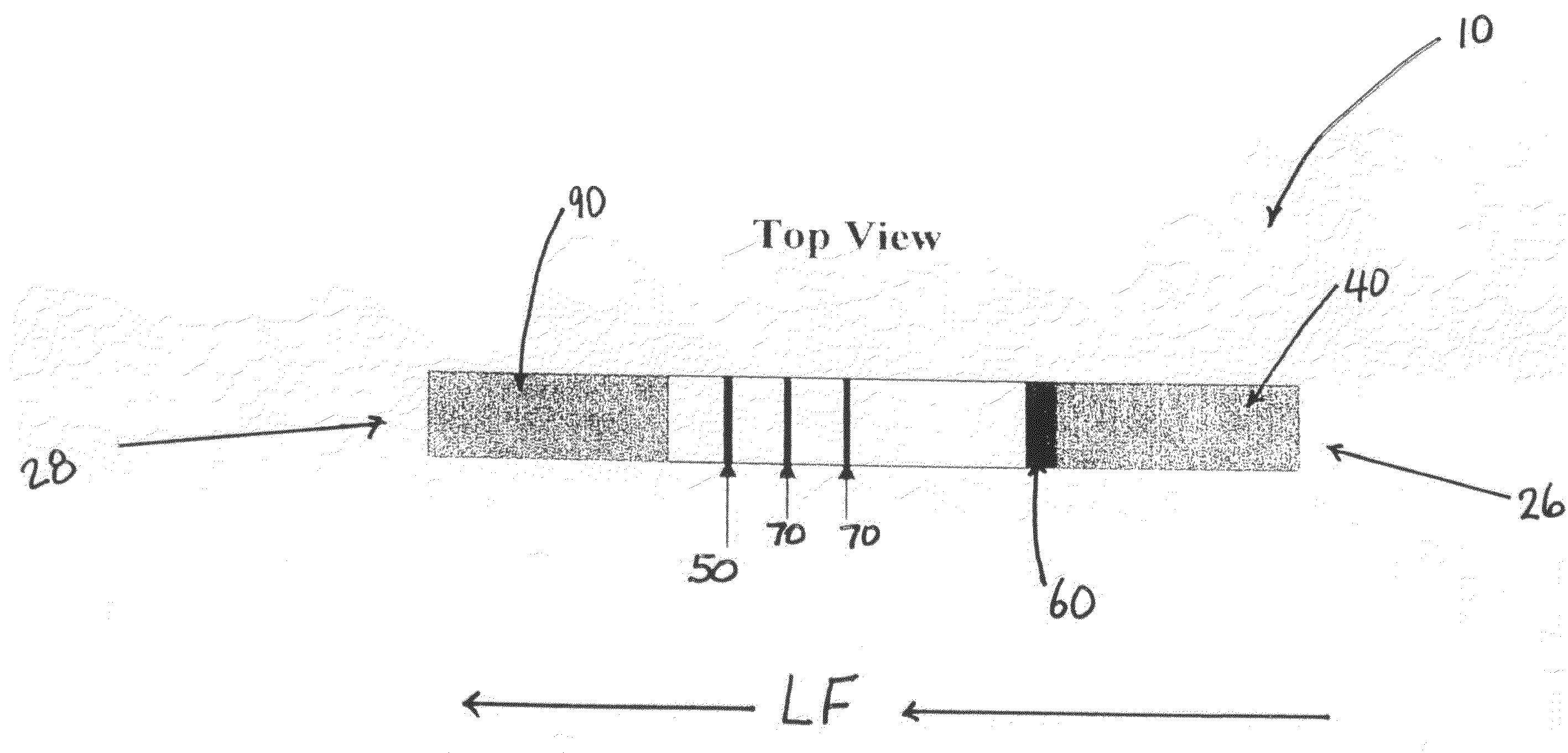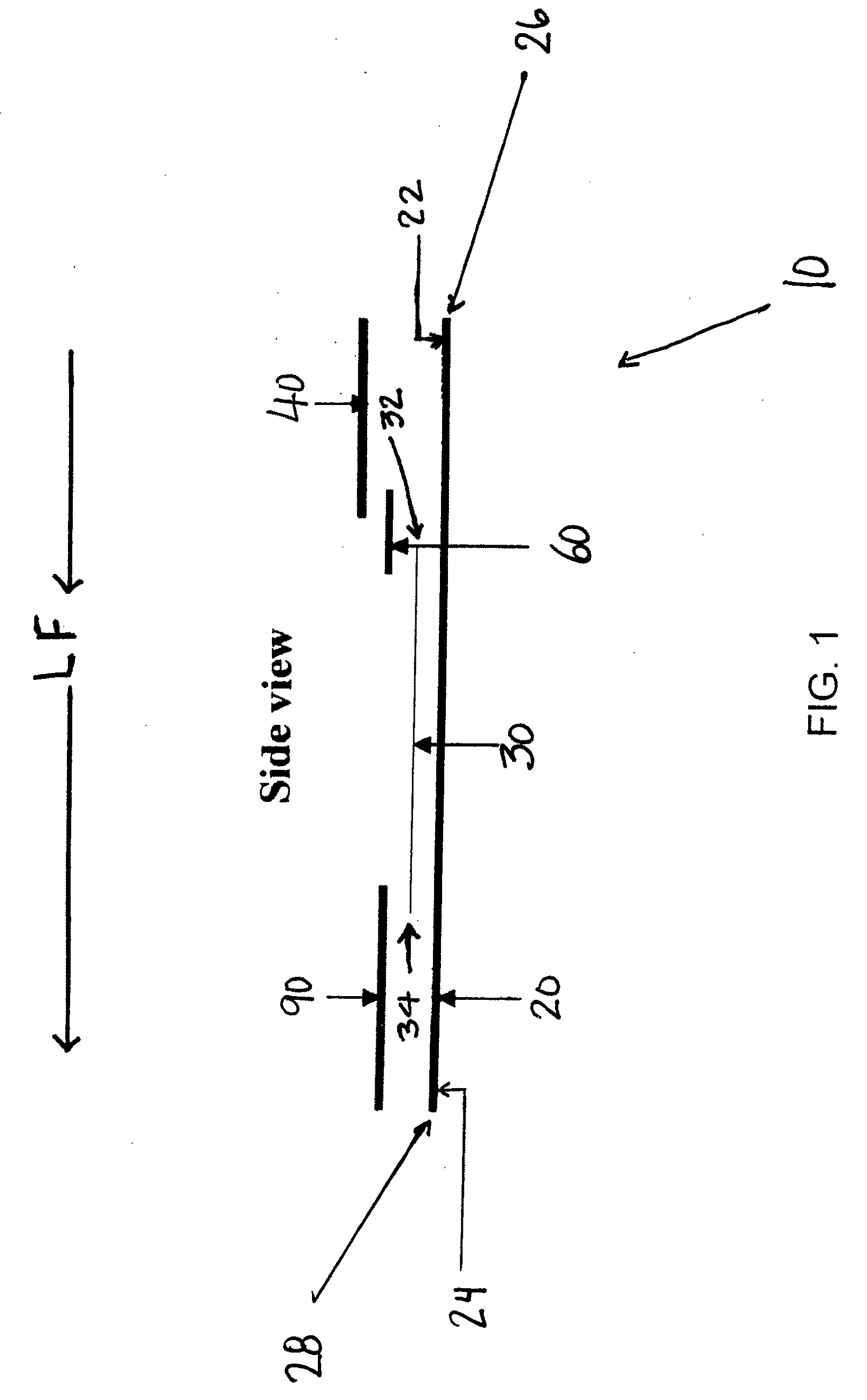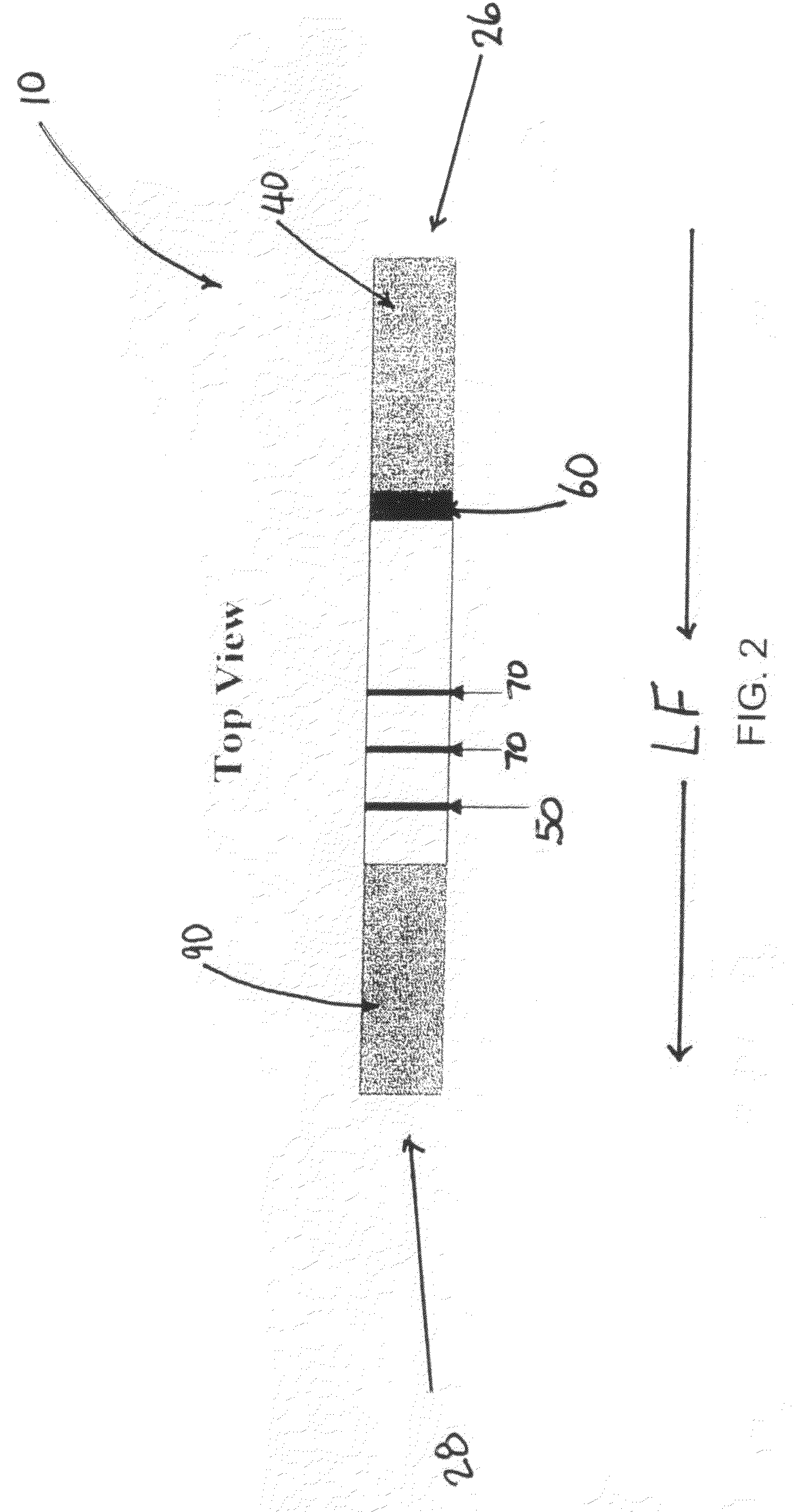Semi-quantitative immunochromatographic device and method for the determination of HIV/AIDS immune-status via measurement of soluble CD40 ligand/CD 154, A CD4+T cell equivalent
a technology of immunochromatographic and chromatographic instrument, which is applied in the field of immunochromatographic instrument and method for monitoring immune system status and function, can solve the problems of cell-mediated immunity decline, body becomes progressively more susceptible to opportunistic infections, and life-threatening opportunistic infections
- Summary
- Abstract
- Description
- Claims
- Application Information
AI Technical Summary
Benefits of technology
Problems solved by technology
Method used
Image
Examples
Embodiment Construction
[0039]Referring specifically to the drawings, FIGS. 1 and 2 generally depict the inventive semi-quantitative, immunochromatographic test strip and method for use thereof at 10 (hereinafter “the device 10”). As has been set forth in more detail herein below, it is designed to provide an accurate semi-quantitative, membrane-based screening test for CD4+ T cell levels by assaying a CD4+ T cell equivalent Soluble CD40 ligand / CD 154. It comprises the newest generation of lateral flow immunochromatographic assay devices, which can be used on site with serum, plasma or whole blood samples.
[0040]Soluble CD40 ligand / CD 154 is a protein, which is expressed on the surfaces of CD4+ T cells following their activation by HIV infection. The serum levels of this protein correlate directly to CD4+ T cell counts. In fact, as disclosed in the article “Levels of Soluble CD40 Ligand (CD154) in Serum Are Increased in Human Immunodeficiency Virus Type 1-Infected Patients and Correlate with CD4+ T-Cell Cou...
PUM
 Login to View More
Login to View More Abstract
Description
Claims
Application Information
 Login to View More
Login to View More - R&D
- Intellectual Property
- Life Sciences
- Materials
- Tech Scout
- Unparalleled Data Quality
- Higher Quality Content
- 60% Fewer Hallucinations
Browse by: Latest US Patents, China's latest patents, Technical Efficacy Thesaurus, Application Domain, Technology Topic, Popular Technical Reports.
© 2025 PatSnap. All rights reserved.Legal|Privacy policy|Modern Slavery Act Transparency Statement|Sitemap|About US| Contact US: help@patsnap.com



